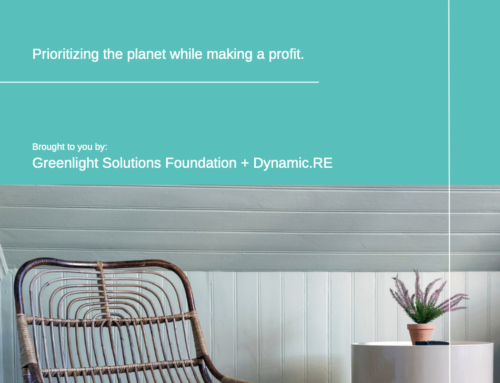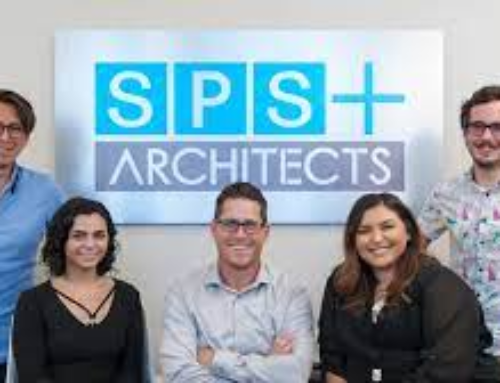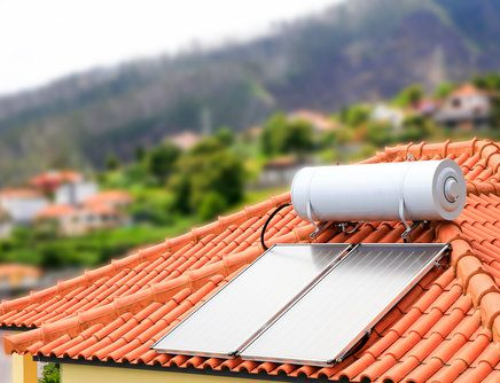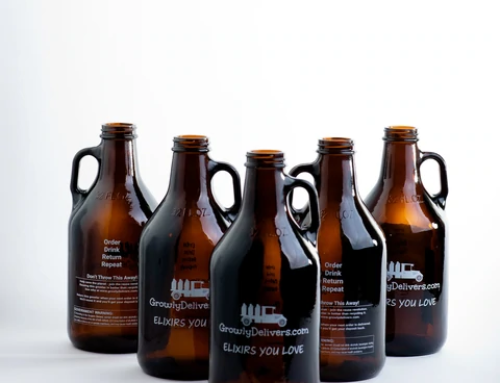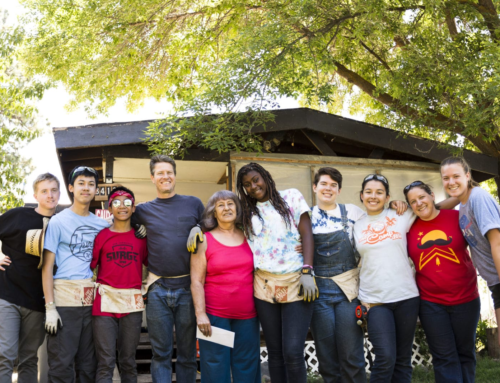Climate change poses significant challenges to the Phoenix Valley. Among these challenges are increased flooding, prolonged drought, groundwater depletion, loss of agriculture revenues, and temperature rise; yet extreme heat poses the greatest threat to Phoenix residents. The average nighttime temperature of central Phoenix is roughly 10-15°F hotter than in more rural areas. This phenomena is known as the Urban Heat Island (UHI) effect, where temperatures are heightened by a ‘built’ city environment. For many people, such as public transit riders, this heat is unavoidable.
Extreme heat is the leading cause of weather-related mortality in the United States annually, which is why increased shade is a necessity for public transportation in Arizona. This is why the Valley Metro GreenLight Project Team focused on advancing Sustainable Development Goals 9 and 11 for their project.
- Sustainable Development Goal 9.1 develops quality, reliable, sustainable, and resilient infrastructure. By helping Valley Metro increase the resilience of light rail stations to extreme heat and improving the quality of shade and comfort in stations, public transportation will be more accessible year round.
- Sustainable Development Goal 11.2 provides access to safe, affordable, accessible, and sustainable transport systems. By improving thermal comfort levels of Valley Metro light rail stations, public transportation becomes safer and more accessible for everyone to use. Because this project focuses on improving the resilience of light rail stations to extreme heat, accommodating everyone and encouraging use of this infrastructure is crucial.
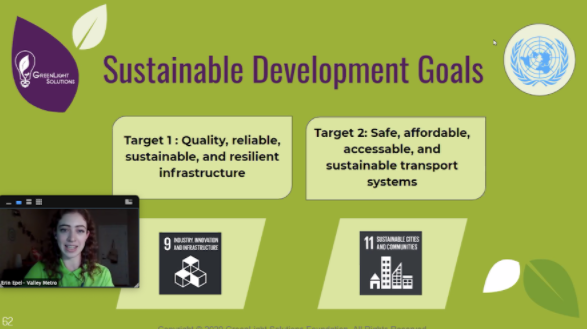
The Valley Metro GreenLight team created two memos to guide Valley Metro’s shade practices. The first memo evaluated shade practices at the most vulnerable light rail stops within the Phoenix metro area, aiming to increase shade structure design, redesign, and implementation at currently established stations. The team interpreted data from the previous GreenLight project and picked four stations that Valley Metro should consider retrofitting for increased stade in the future. These four stations were chosen for a number of reasons: available land, city, current shade, temperature, and surrounding community income. From these four stations, one station was chosen by Valley Metro and was submitted for the Healthy Urban Environments (HUE) grant. If awarded, the HUE grant would provide funding for critical retrofits.
The second memo established best practices and brief guidelines for Valley Metro’s future light rail stops and walksheds. This memo combined past knowledge and discussed different methods to improve Arizona’s light rail systems. This report highlighted various best practices with regard to public art, station structure, technology, and urban forestry, and also reviewed common mistakes that Valley Metro should avoid moving forward.
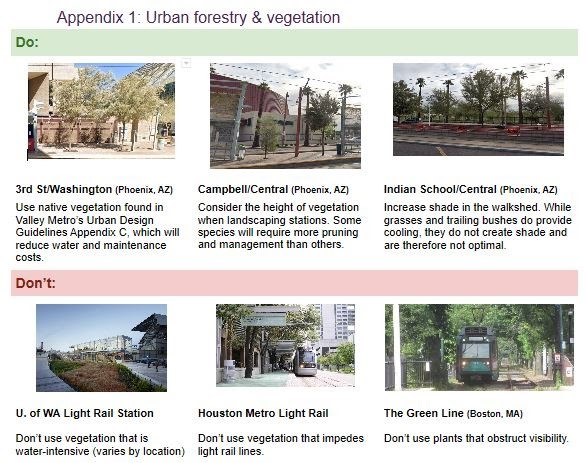
To learn more about this project, watch our Solutioneer Showcase presentation. The Valley Metro GreenLight team is proud of their accomplishments this semester and cannot wait to see their research come to life in the Phoenix metro area.
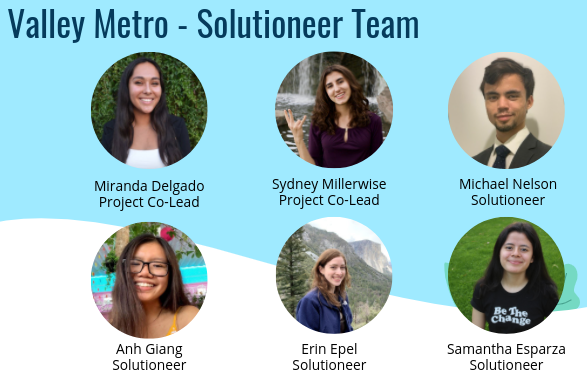
Authors & Project Team: Anh Giang, Erin Epel, Michael Nelson, Miranda Delgado, Samantha Esparza, Sydney Millerwise
Thank you for reading our blog! Leave a comment & share on social media.
➡ Get involved: Businesses | Students | Professionals | Colleges | Volunteer
➡ Support our sustainability initiatives: Donate Now | Give Monthly | Sponsor
➡ Follow us on social media: Facebook | LinkedIn | Instagram | Twitter

